AC_Grounding_Basics_Grounding_Series_(Part_4).pdf
Transcript:
[0m:4s] Hi I'm Josh Bloom, welcome to another video in the RSP Supply education series. If you find that these videos are helpful to you, it certainly helps us out if you could give us a big thumbs up and subscribe to our channel.
[0m:16s] In today's video, we are going to continue on in our series which we are talking about electrical grounding. If you have not already seen that video, we will link it in the description below as the concepts we discussed might help you better understand other topics that will be discussed in this series.
[0m:33s] For the purpose of this video, we want to focus on the basics of grounding an AC system with the focus on lower voltage systems, between 50 and 1,000 volts AC. In this video, we will briefly discuss how to ground these systems properly and talk about grounding within the main electrical service panel, as well as scenarios where there may be more than one electrical service box or electrical component in your AC system.
[1m:5s] The NEC states that electrical systems be grounded to a point that
[1m:9s] the maximum voltage to ground underground conductors does not exceed 150 volts.
[1m:16s] It also states that any 3 phase 4 wire, Y configurations, and Delta configurations have the neutral wire be grounded as well.
[1m:27s] These requirements cover any electrical systems, ranging from single phase 120 volts all the way to three phase 480 volts AC.
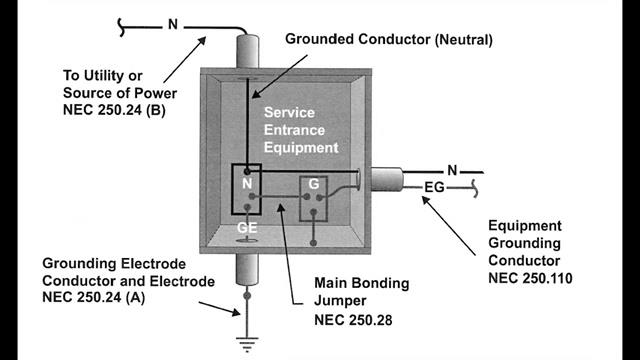
[1m:38s] The conductor that needs to be grounded in these types of systems will always be the neutral wire, again mandated by the NEC. A bonding conductor is needed for the use between the grounded conductor or neutral wire and the equipment grounding conductor to the metallic enclosure of the main electrical service. It is important to make sure that a properly sized conductor is used to accommodate the potential surges that may occur in your electrical system.
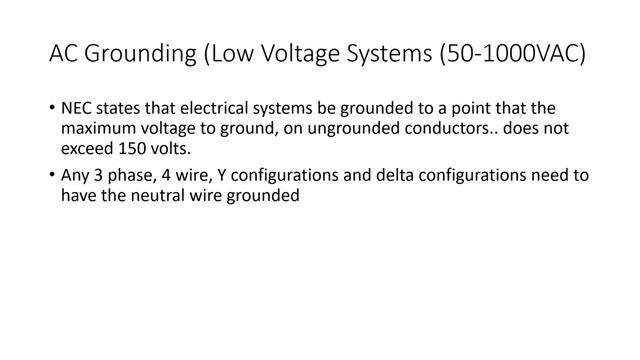
[2m:8s] When grounding in a separately derived AC system, which is a system where components such as a generator can have the grounded conductors or neutral wires, continuity interrupted possibly by a transfer switch. It is important to make sure that the grounding conductor or the neutral wire is bonded to equipment grounding conductor of the metallic chassis on the load side of the electrical service through the use of a main bonding jumper.
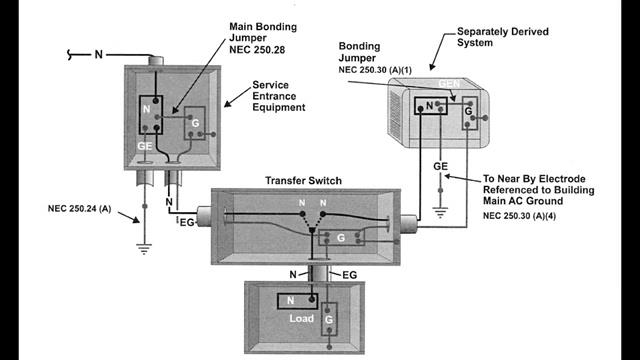
[2m:40s] When continuity is not being interrupted on the load side, then it is critical to make sure that there is no bond between the neutral wire or grounding conductor and the metallic chassis of the electrical service.
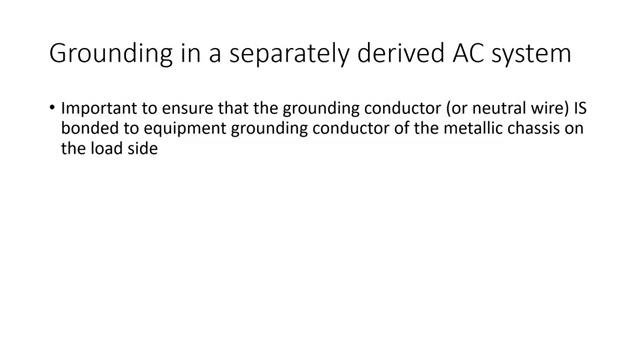
[2m:54s] This will allow the main bonding to occur at the main service panel entrance point.
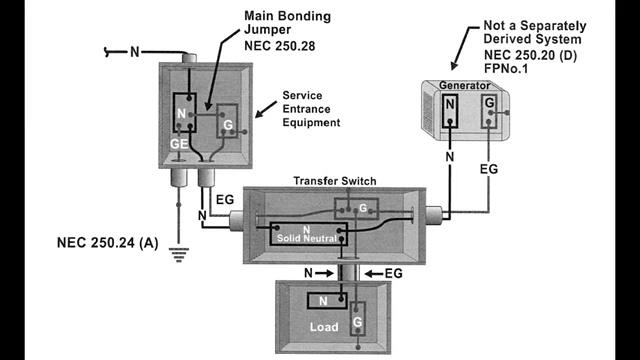
[3m:1s] By understanding the few basic grounding principles, you can ensure that your low voltage AC electrical systems are properly grounded, allowing for safe operation and use by anyone interacting with that equipment.
[3m:16s] For a full line of electrical grounding equipment and thousands of other products, please go to our website. For more information or other educational videos, go to RSPSupply.com, the Internet's top source for industrial hardware. Also, don't forget: like and subscribe.




